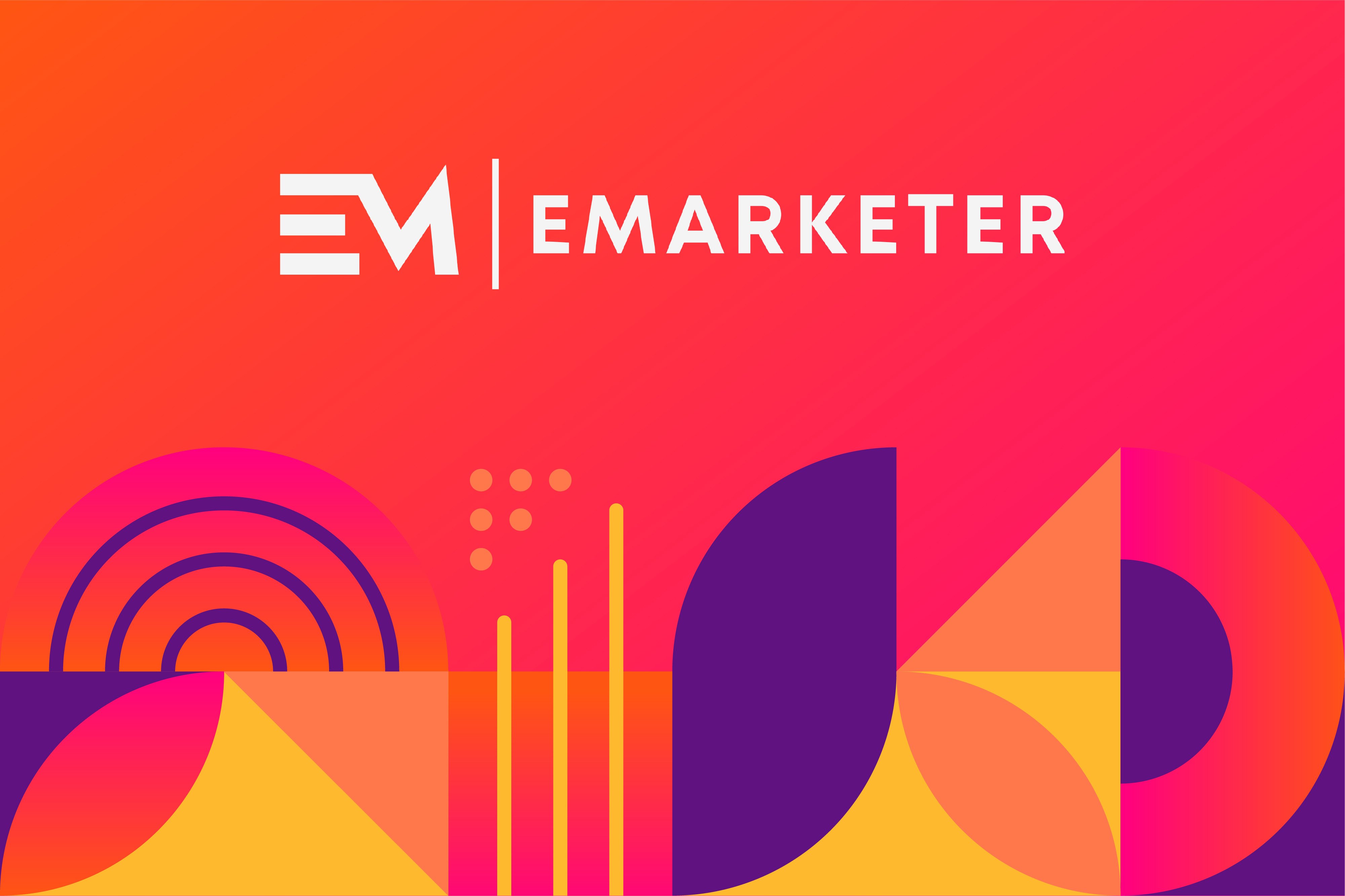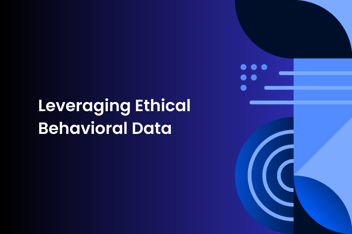A summary of EMarketer’s “Ad Measurement Trends: Overcoming Signal Loss and Attribution in 2025” webinar with DISQO.
Ad measurement in 2025 is at yet another turning point. With signal loss escalating and attribution complexities deepening, advertisers can no longer ignore these challenges. How do you accurately measure campaign impact across siloed platforms and the open web? How can brands ensure their strategies remain resilient amid constant privacy regulations and technology shifts?
These questions aren’t just theoretical—they represent acute obstacles for marketers as fragmentation continues. Retail media networks are booming, but their siloed data restricts clarity. Third-party cookies are (still) phasing out, leaving advertisers to grapple with fragmented identity solutions. At the same time, attribution challenges across siloed platforms demand more precise, reliable measurement tools.
This article draws on insights from the eMarketer webinar "Ad Measurement Trends: Overcoming Signal Loss and Attribution in 2025," featuring eMarketer Vice President Marissa Coslov and Senior Analyst Evelyn Mitchell-Wolf. Together with Steven Jepson, President of Media Effectiveness at DISQO, they explored today’s ad measurement challenges and strategies for overcoming them.
As a leader in deterministic, identity-based measurement, DISQO is transforming how advertisers approach ad measurement. In this article, we’ll unpack the challenges shaping the future, explore the frameworks to address them, and showcase how DISQO bridges the gap between brand metrics and outcomes with innovative, fully consented, privacy-compliant solutions.
1. Siloed platforms’ ad measurement challenges
2. The open web’s measurement complexity
3. Retail media networks and the attribution conundrum
4. Incrementality and the path forward
5. Bridging the gap between brand metrics and outcomes
Siloed platforms’ ad measurement challenges
Siloed platforms like Meta, TikTok, and YouTube have become indispensable to modern media plans, offering access to vast, logged-in audiences. Yet, they remain notoriously opaque, restricting access to individual ad exposure, transaction data, and cross-platform usage. This lack of transparency forces advertisers to rely on the platforms’ self-reported metrics—what Jepson aptly referred to as “letting platforms grade their own homework.” The result? Over-attribution and incomplete insights prevent advertisers from understanding the actual campaign effectiveness.
The growing use of AI-powered ad tools like Meta’s Advantage+ and Google’s Performance Max further compounds these limitations. While these tools promise optimization within the platforms, they obscure critical details about what’s driving performance. Wolf noted that these gaps make it “nearly impossible for advertisers to compare platforms or determine the actual media investment impact.” The lack of interoperability between siloed platforms creates significant challenges for brands striving to craft cohesive, cross-channel strategies.
Addressing this head-on with an innovative measurement methodology and consumer-consented person-level identity graphs, DISQO bridges the data gaps across platforms. “With direct consumer consent, we connect ad exposure across channels—streaming TV, Meta, TikTok—and provide reliable cross-channel measurement,” Jepson explains. This approach enables deterministic tracking of brand lift metrics like awareness and purchase intent and outcome-based metrics such as search lift and online shopping behavior.
With this unified view of campaign effectiveness, advertisers understand how platforms perform in isolation and how they interact within a broader strategy. Jepson emphasizes that the real value lies in acting on these insights. “This isn’t just about measurement—it’s about enabling marketers to optimize campaigns while they’re still running, ensuring their investments deliver maximum impact,” turning siloed measurement challenges into opportunities for smarter, more effective advertising.
The open web’s measurement complexity
While siloed platforms pose their own challenges, the open web presents a different—but equally daunting—landscape for advertisers. Signal loss has left brands struggling to measure and target audiences effectively. Unlike siloed platforms, where logged-in users provide a degree of consistency, the open web’s reliance on anonymous and logged-out traffic makes precise measurement difficult.
Arguably, the proliferation of cookieless identity solutions has added complexity rather than clarity. Wolf highlighted that advertisers are often left adopting multiple IDs to maximize reach and ensure measurement accuracy. “There’s no single ID that replicates the scale or utility of third-party cookies,” she explained, adding that this forces brands to juggle a patchwork of solutions that may not integrate seamlessly. The slow adoption of alternative IDs, compounded by inconsistent interoperability, further widens the measurement gap.
DISQO offers a powerful solution to these open web challenges by leveraging deterministic, identity-based methodologies. Even without cookies, DISQO can capture reliable insights into consumer trends and behavior across the open web. Steven Jepson emphasized the importance of privacy and consent in this approach. “We’ve built a person-level identity graph based on consumer-consented data, enabling us to measure ad effectiveness with precision, even in cookieless environments.” This capability ensures advertisers can track user activity and evaluate campaign impact without compromising privacy or data quality.
With unified, privacy-compliant data, advertisers gain more than just a measurement tool—they gain a strategy for navigating the open web’s evolving challenges. By delivering consistent, reliable insights, DISQO empowers brands to effectively target audiences and confidently refine their campaigns, regardless of ecosystem shifts.
Retail media networks and the attribution conundrum
Retail media networks (RMNs) are rapidly reshaping digital advertising, offering brands access to valuable first-party data and closed-loop attribution. However, this surge in influence has brought new challenges. RMNs often operate within silos, using their own attribution methodologies that may not align with metrics from traditional channels or even other RMNs. This lack of standardization makes it difficult for advertisers to assess campaign ROI holistically.
As RMNs expand into offsite inventory and commerce media models, attribution challenges have grown painfully. More than this, self-reported metrics from platforms can lead to over-claimed attribution, creating a murky campaign performance picture. Without consistent benchmarks, advertisers are left wondering how to compare their retail media efforts to broader marketing initiatives effectively.
DISQO addresses this complexity by enabling cross-channel measurement that spans ecommerce and traditional platforms. By capturing consumer-consented data, including SKU-level purchase behavior across retailers, DISQO connects ad exposure to actual outcomes. This approach validates media performance and allows advertisers to identify and optimize the channels driving the strongest results.
For brands, this means more clarity and control over their campaigns. Instead of relying solely on platform-reported metrics, advertisers can access a unified performance view, helping them make informed decisions about budget allocation and optimization in real time.
Incrementality and the path forward
Incrementality testing has become a cornerstone of effective advertising measurement, quantifying the unique contribution of each channel, platform, or creative asset to campaign outcomes. However, implementing incrementality studies can be resource-intensive and complex. Many advertisers struggle to align methodologies across platforms, particularly when measuring cross-channel campaigns that include siloed media.
Then, there is the challenge of inconsistent metrics and methodological differences between platforms that often hinder meaningful comparisons. Advertisers may struggle to determine which campaign elements drive incremental outcomes without a standardized approach. This gap complicates efforts to optimize campaigns and allocate budgets effectively.
At DISQO, we are streamlining incrementality measurement by integrating advanced methodologies and leveraging consumer-consented data. This approach enables advertisers to conduct scalable lift tests across channels to accelerate traditionally manual processes. We measure traditional brand metrics like awareness and favorability and specific performance KPIs, such as web lift, search lift, app downloads, and online purchases.
These innovations reduce the time and effort required for incrementality testing, making it more accessible for advertisers to assess their campaigns in-flight. With more precise insights into what’s working, brands can adjust their strategies dynamically, ensuring they optimize every media dollar spent.
Bridging the gap between brand metrics and outcomes
Ad measurement often operates in silos, with brand metrics like awareness and favorability viewed separately from performance outcomes such as app downloads or purchase behavior. This disconnect can make it difficult for advertisers to see the complete picture of campaign effectiveness or assess long-term impact. As Jepson noted, “You can’t truly optimize a campaign without understanding how brand and outcome metrics influence each other.”
Closing this gap requires a measurement approach that follows the entire consumer journey—from awareness to consideration to conversion. DISQO’s methodology addresses this by combining deterministic tracking with consumer-consented data to provide a unified view of both brand lift and outcomes lift KPIs. For example, DISQO’s capabilities allow advertisers to measure upper-funnel metrics like awareness while capturing downstream actions such as web visits, search activity, app downloads, or online purchases.
This holistic approach also enables brands to identify key moments in the customer journey where their campaigns have the most significant impact. Whether improving creative resonance in the early stages or driving conversions in the final stretch, understanding how different metrics interconnect allows advertisers to refine their strategies more effectively.
As advertisers look to the future, bridging the gap between brand and performance metrics will become essential. With advanced measurement tools and actionable insights, brands can better connect the dots, ensuring their campaigns reach the right audiences and deliver meaningful results throughout the consumer journey.





